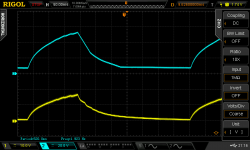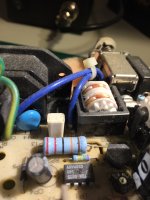apm
Well-known member
I'm working on repairing a non-functioning Macintosh 12" Monochrome Display. The proximate cause seems to be that resistor RP13 is missing -- completely gone, nowhere to be found, nothing but a blackened set of pads left behind. The underlying fault appears to be that DP5 has shorted, but replacing it doesn't do me much good until I figure out what to replace RP13 with.
Does anyone have one of these displays who could open it and post a photo of the main PCB? RP13 is just behind the mains socket, though I can't even tell if it was originally a through-hole or surface mount part.
Does anyone have one of these displays who could open it and post a photo of the main PCB? RP13 is just behind the mains socket, though I can't even tell if it was originally a through-hole or surface mount part.



